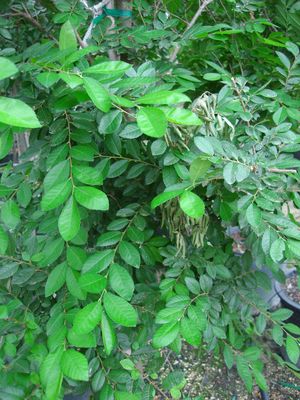Print This Page
Elm, Cedar
Ulmus crassifolia
Cedar Elm is a Texas native tree highly valued for its adaptability and resilience in the landscape. This deciduous tree is well-suited to a wide range of conditions across the state, including alkaline, rocky, and clay soils. It tolerates poor drainage and periods of drought, making it ideal for urban and rural settings alike. With its characteristic small, rough-textured leaves and graceful upright form, the Cedar Elm is a reliable choice for shade and ornamental use in Texas landscapes.
Cedar Elm is particularly beneficial as a shade tree or a focal point in large yards or parks. Cedar Elm grows to a mature height of 50 to 70 feet with a spread of 40 to 60 feet, creating an expansive canopy. It thrives in full sun to partial shade and handles the intense Texas summer heat well. As a native species, it supports local wildlife, including birds and pollinators, and has natural deer resistance.
Cedar Elm produces inconspicuous greenish flowers in late summer, followed by small, winged seeds in early fall. These seeds can create some litter but are a valuable food source for wildlife. When planting multiple Cedar Elms, space them 30 to 50 feet apart to allow their canopies to develop fully.
In winter, Cedar Elm requires minimal care, as it is hardy across all of Texas and can withstand freezes without issue. Regular pruning during the dormant season helps maintain a strong structure and encourages healthy growth in the spring.
 |
Shade Tree |
 |
Drought Tolerant |
 |
Supports Wildlife |
|
|
 |
Height:70 Feet
|
 |
Spread:40 Feet
|
 |
Spacing:30-50 feet
|
USDA Hardiness Zone 6a
Available Sizes:
| Item |
Description |
| ELM-CED-05 |
#005 ELM, CEDAR |

|
| ELM-CED-15 |
#015 ELM, CEDAR |

|
| ELM-CED-45 |
#045 ELM, CEDAR |

|
| ELM-CED-95 |
#095 ELM, CEDAR |

|
Characteristics & Attributes
|
Deer Tolerance
|
Exposure
| • |
Full Sun |
| • |
Full Sun to Part Shade |
|
Habit
|
Soil pH Preference
|
|
Water Needs
|
Texas Native
|
Tolerates Poor Drainage
|








